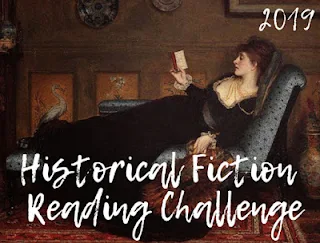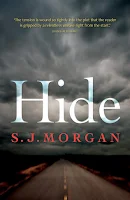2019 Australian Women Writer's Challenge
To complete the Franklin level of the 2019 Australian Women Writer's Challenge I had to read 10 books and review 6 of them. I improved on last year's tally of 15 books and read the following 21 books:1. The Easiest Slow Cooker Book Ever by Kim McCosker ✭✭✭1/2
2. The Scholar by Dervla McTiernan ✭✭✭
4. Under the Midnight Sky by Anna Romer ✭✭✭
5. The Dark Lake by Sarah Bailey ✭✭✭
6. Small Spaces by Sarah Epstein ✭✭✭✭
7. Into the Night by Sarah Bailey ✭✭✭
8. The Accusation by Wendy James ✭✭✭✭1/2
9. The Forgotten Letters of Esther Durrant by Kayte Nunn ✭✭✭✭
10. The Museum of Modern Love by Heather Rose ✭✭
11. Unsolved Australia: Lost Boys, Gone Girls by Justine Ford ✭✭✭
12. The Blue Rose by Kate Forsyth ✭✭✭✭
13. Cold Case Investigations by Xanthe Mallett ✭✭✭
14. Hide by S.J. Morgan ✭✭✭✭
15. The Van Apfel Girls are Gone by Felicity McLean ✭✭✭
16. Hive by A.J. Betts ✭✭✭
17. Rogue by A.J. Betts ✭✭✭
18. Dressing the Dearloves by Kelly Doust ✭✭✭✭
19. Death on the Derwent - Sue Neill-Fraser's Story by Robin Bowles ✭✭✭
20. The Choke by Sofie Laguna ✭✭
21. The Arsonist by Chloe Hooper ✭✭✭
Aussie Author 2019 Challenge
For the Aussie Author 2019 Challenge I had to read and review 12 titles by Australian authors across a minimum of 3 genres. 4 titles had to be by female authors, 4 titles by male authors and at least 4 had to be new (to me) authors. I improved on last year’s number of 26 and read the following 30 books:1. Dead Heat by Peter Cotton ✭
2. Hunter by Jack Heath ✭✭✭✭✭
3. Green Is The New Black by James Phelps ✭
4. The Easiest Slow Cooker Book Ever by Kim McCosker ✭✭✭1/2
5. The Scholar by Dervla McTiernan ✭✭✭
6. Under the Midnight Sky by Anna Romer ✭✭✭
7. My Book (Not Yours) by Ben Sanders ✭✭✭
8. The Dark Lake by Sarah Bailey ✭✭✭
9. Boxed by Richard Anderson ✭✭✭✭
10. A Lovely and Terrible Thing by Chris Womersley ✭✭✭
11. Small Spaces by Sarah Epstein ✭✭✭✭
12. Into the Night by Sarah Bailey ✭✭✭
13. The Accusation by Wendy James ✭✭✭✭1/2
14. The Forgotten Letters of Esther Durrant by Kayte Nunn ✭✭✭✭
15. The Museum of Modern Love by Heather Rose ✭✭
16. The Everlasting Sunday by Robert Lukins ✭✭✭
17. Unsolved Australia: Lost Boys, Gone Girls by Justine Ford ✭✭✭
18. The Blue Rose by Kate Forsyth ✭✭✭✭
19. Snake Island by Ben Hobson ✭✭✭✭✭
20. Cold Case Investigations by Xanthe Mallett ✭✭✭
21. Silver by Chris Hammer ✭✭✭
22. Hide by S.J. Morgan ✭✭✭✭
23. The Van Apfel Girls are Gone by Felicity McLean ✭✭✭
24. Sh*t Towns of Australia by Rick Furphy and Geoff Rissole ✭
25. Hive by A.J. Betts ✭✭✭
26. Rogue by A.J. Betts ✭✭✭
27. Dressing the Dearloves by Kelly Doust ✭✭✭✭
28. Death on the Derwent - Sue Neill-Fraser's Story by Robin Bowles ✭✭✭
29. The Choke by Sofie Laguna ✭✭
30. The Arsonist by Chloe Hooper ✭✭✭
As you can see, I had a prolific reading year in 2019 supporting Australian authors and publishers with some fantastic titles in the mix across a variety of genres.
I'll be signing up for both challenges again in 2020 and sign-up pages are already open so visit the 2020 Australian Women Writer's Challenge and 2020 Aussie Author Challenge pages for more info.
Carpe Librum!















































